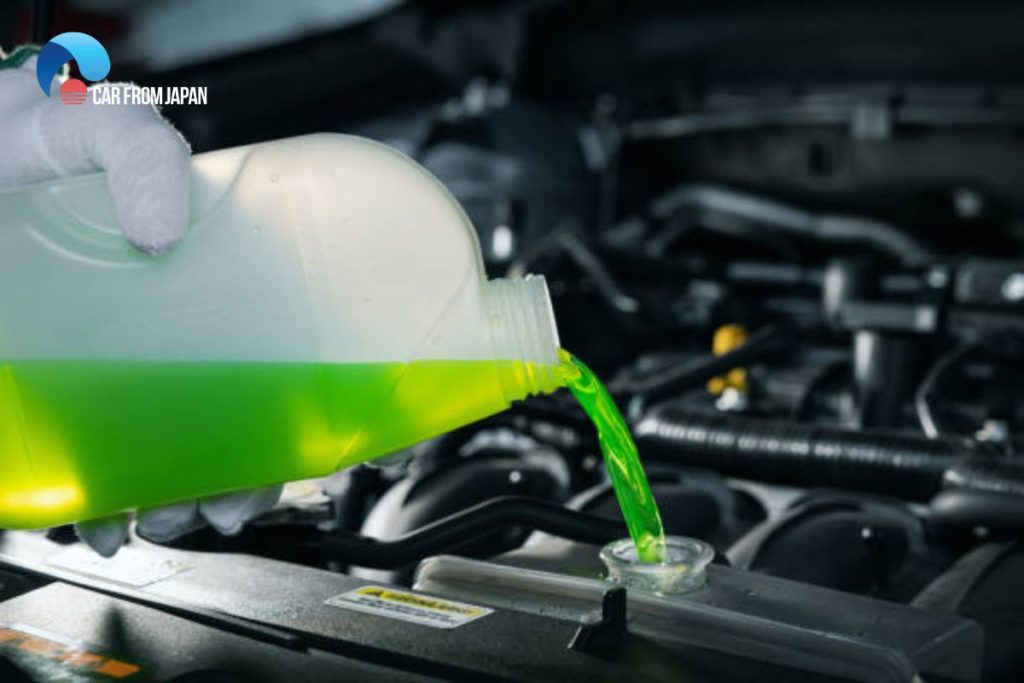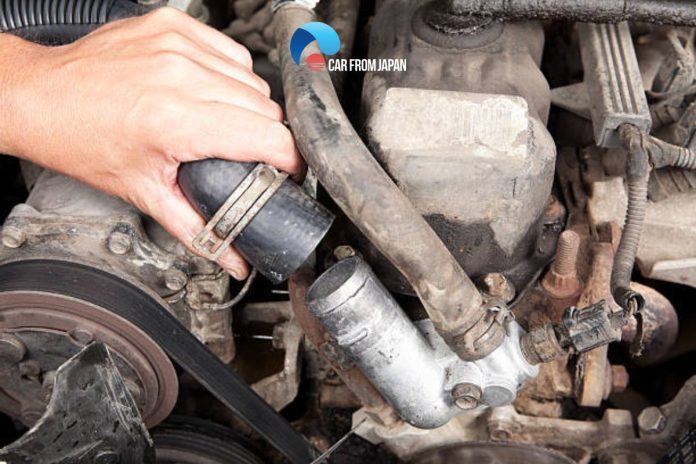If you’ve noticed your lower radiator hose is cold even when your engine is warm, it’s a clear signal that your car’s cooling system isn’t working correctly. Normally, hot coolant flows through this hose after being cooled by the radiator.
When it stays cold, it means this crucial circulation isn’t happening as it should. There are several potential causes that are doing this, and identifying them is key to preventing engine damage.
Let’s explore the possible causes of the lower radiator hose cold issue!
Contents
- Reasons Responsible For The Lower Radiator Hose Cold Issue
- What You Should Do (Diagnosis and Action)
- FAQs on Lower Radiator Hose Cold
- Is a cold lower radiator hose always a sign of a bad thermostat?
- Why does my lower radiator hose stay cold even when the engine is overheating?
- Why does the lower hose feel cold only at idle but warms up while driving?
- Why is my lower radiator hose cold but the heater blows hot air?
- Why does the lower hose stay cold longer in winter even after the engine warms up?
- Is it dangerous to keep driving if the lower radiator hose stays cold?
- Conclusion
Reasons Responsible For The Lower Radiator Hose Cold Issue
Whether it’s an upper radiator or a lower radiator hose problem, both need to be detected and fixed as soon as possible. If it fails to do so, it can affect the working of the car’s cooling system.
So, let’s discover the potential reasons responsible for the cold air coming out of the lower radiator hose of your vehicle.
Lack of coolant in the engine
One such reason behind not heating the lower radiator might be the improper amount of coolant in the engine. The coolant is circulated in and out of the radiator by upper and lower hoses.
Thus, the lower radiator hose heats up. It may happen that your car might get low on coolant and be unable to reach the lower radiator. As a result, the lower hose emits cold air.

Water leaks
The most common problem that is guilty of this issue is the water leaks. There are several places responsible for these leaks.
So, make sure that you check both the upper and lower hoses for any damage. If any leak persists, the lower radiator hose will not heat up properly.
Thermostats not working properly
It may happen that the thermostat gauge of your car is broken or not working properly.
You might know that if the thermostat is not able to provide a signal to the car that the engine is hot, the coolant will not flow to the heater and the air will remain cool.
As a result, the coolant will not reach the lower radiator and will produce cool air only.
Issues with the heater core
Sometimes, it is possible that the coolant is not traveling through the heater core appropriately, or the air from the blower is not reaching properly.
Thus, the lower radiator is not able to perform its function due to the problems in the heater core. So, ensure that the heater core is working perfectly fine.
You may also follow some car maintenance tips to figure out the signals that your car may provide if your heater is not working correctly.
What You Should Do (Diagnosis and Action)
Safety first: Never open a hot cooling system or work on a hot engine. Wait for it to cool down completely to avoid severe burns.
Check coolant level
This is the easiest first step. Ensure the coolant reservoir is at the correct level and, when the engine is cool, check the radiator level (if it has a cap).
Visual inspection
Look for obvious leaks, damaged hoses, or a loose/damaged serpentine belt (which might drive the water pump).
Feel the hoses
Confirm the upper hose is getting hot and the lower hose is staying cold. This helps pinpoint the lack of circulation through the radiator.
Consider recent work
Has any cooling system work been done recently (eg, coolant flush, thermostat replacement)? This might point towards an airlock or an incorrectly installed part.
image
Never open a hot cooling system or work on a hot engine. (Photo: iStockphoto)
FAQs on Lower Radiator Hose Cold
Is a cold lower radiator hose always a sign of a bad thermostat?
Not always. It could also mean the engine hasn’t warmed up fully, the water pump isn’t circulating coolant, or there’s an air pocket in the system.
Why does my lower radiator hose stay cold even when the engine is overheating?
This often points to coolant not circulating, either due to a stuck thermostat, clogged radiator, or failed water pump impeller.
Why does the lower hose feel cold only at idle but warms up while driving?
At higher RPMs, the water pump pushes more coolant through, overcoming restrictions. At idle, weak flow may keep the lower hose cold.
Why is my lower radiator hose cold but the heater blows hot air?
Because the heater core has its own coolant circuit. It may still heat up while the radiator loop is blocked or restricted.
Why does the lower hose stay cold longer in winter even after the engine warms up?
Because the thermostat only opens when coolant reaches a specific temperature.
In cold weather, the engine may take longer to trigger flow to the radiator.
Is it dangerous to keep driving if the lower radiator hose stays cold?
Potentially, yes!
If circulation is blocked, the engine could overheat internally even if the gauge doesn’t spike immediately.
Conclusion
In summary, if your lower radiator hose cold while your engine is hot or overheating, it’s a clear sign that hot coolant isn’t circulating properly through your radiator.
The most common culprits behind this issue are a stuck thermostat, low coolant levels, a failing water pump, or a clogged radiator.
Addressing these potential causes promptly is crucial to prevent serious engine damage and ensure your car’s cooling system functions effectively.




My 04 Altima only gets heat while sitting reving the engine. Once I drive it turns cold. The bottom hose doesn’t get hot or heater core hose unless I’m sitting reving the engine. I haven’t had any leak signs but do smell like sweet smelland coolant leaving g somewhere but no signs of leaks car drives the best though. What could this be? It has two thermostats that has been changed but could one being put in improper cause the car not to get any heat?
Your heater core is leaking pull the carpet back on passenger side and see if the floor is wet
I replaced the thermostat housing on my 2004 Toyota Sienna (removed everypart of the air box, loosened the starter because I needed about a 1/2″ to clear and replace the housing — these steps saved a lot of frustration because removal and installation was a lot smoother) — reconnected everything but only put antifreeze in the over flow tank (be sure to fill the radiator with antifreeze as well) — didn’t take into account how much was lost due to the damage part and lose of fluid. Went back out filled the radiator and drove the van, no problems. Thanks for the info. it was very helpful.